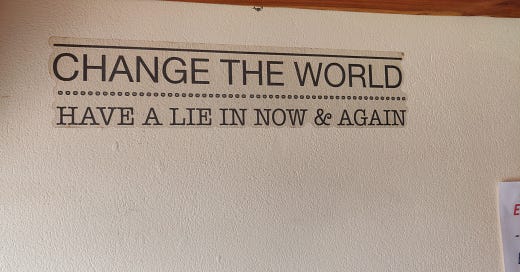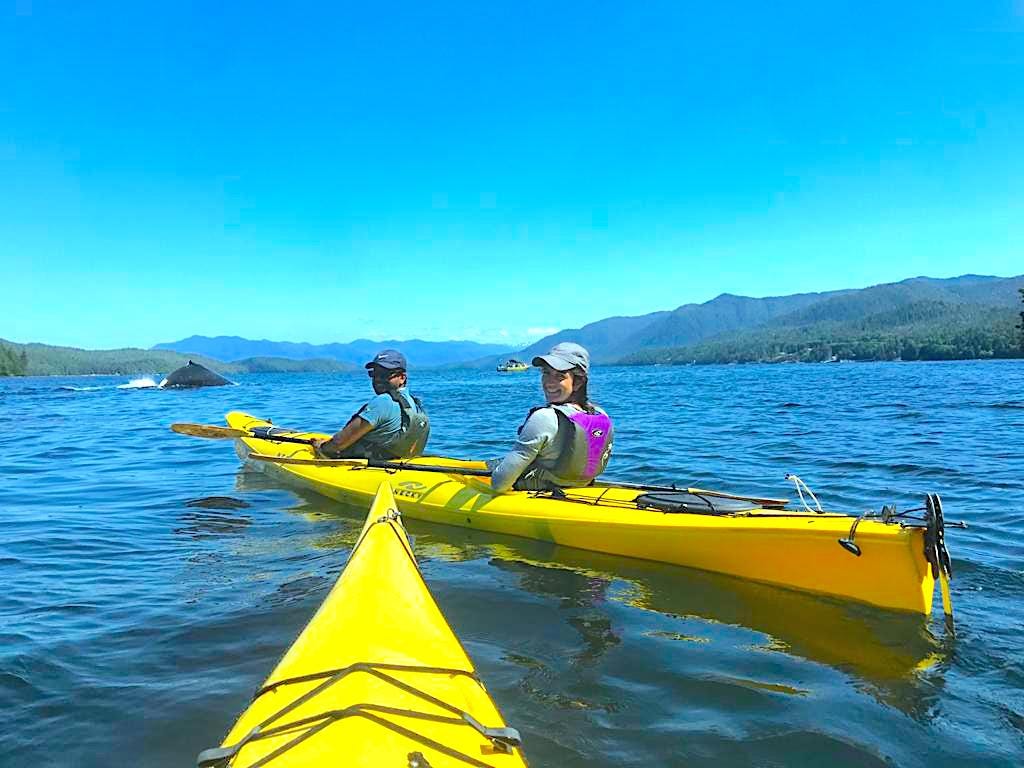After last week’s interlude in New York, I’m returning to my “Back to the Ranks” series of transitioning from social entrepreneur to senior management. The first 2 episodes were:
1. Knowing When to Walk Away: How to know when to step down as a founder-CEO
2. 28 Lessons from 10 Years as a Social Entrepreneur: Pretty much exactly that
Something I’m Learning
This is a good post for a Sunday! It all started with a TED Talk I watched sometime in 2012 or so, by the designer Stefan Sagmeister, who crunched some numbers: “right now we spend…40 years…working. And then tacked on at the end of it are about 15 years for retirement. I thought it might be helpful to cut off five of those retirement years and intersperse them in between those working years.”
YESSS, I thought when I heard that. I can always sit behind a laptop at age 66 but can I chase after a whale shark in open water or hike all day at that age? (I can barely do it now, frankly...)
But at the time I was building a start-up so this line landed like a sleeper agent in enemy country; it burrowed in deep and emerged every few months to check in. And then, seven years or so into building Amani Institute, the sleeper agent roused itself. I decided I would take a year off after 10 years as an entrepreneur, and began preparing the organization for it. I also began saving aggressively for it. But the best-laid plans, etc. My sabbatical turned into a career transition, with my year away from my company becoming eight months to decide what I wanted to do next.
Elsewhere, I’ve written about what we did and how we went about travelling the world during Covid, been interviewed in Fast Company (see below), and discussed the whole experience at length in a podcast about sabbaticals. So I won’t go into any of that here. But with the benefit of a bit more distance, what I’ve learned is:
1. It’s a gift to give yourself – and that’s all it needs to be. I didn’t have any great personal epiphanies or transformations. I just really enjoyed travelling with my partner and working on a book. Borrowing against a year of retirement to do that was utterly worth it. I did not actively think about what I was going to do next for the 8 months of my sabbatical.
2. It planted the seeds for my next steps. This slightly contradicts the previous point (hey, life is complex!) but the first seeds of my current professional focus – the intersection of leadership and climate change – were planted during that sabbatical, while talking shop with gorilla park rangers in Uganda and whale shark tour operators in Belize, getting caught in a generational heatwave in Portland, and seeing glaciers melting too fast in Alaska. That said, figuring out my professional future was never an intention of these trips.
3. It takes longer than you think to get back on track. I’ll go into this more in future episodes but it took me a whole year from declaring my sabbatical over to getting my next full-time job. It was not a slow year and I kept myself solvent through teaching, consulting, and speaking engagements but, nevertheless, finding my next job took a lot longer than I expected it would. Perhaps a useful rule of thumb is to plan (and save) in advance for nearly as much time post-sabbatical as during the sabbatical - and hope that you get lucky sooner than that.
In Welcome to Earth, my favorite TV show of my sabbatical year, Will Smith quotes his grandmother Gigi saying “the best things in life are on the other side of fear”. While I was very cognizant of what an immense privilege it is to be able to take risks such as letting go of an excellent job to have a year of adventure, it required pushing past many fears. Because of course it's not easy to just stop mid-career. As much as there are concerted efforts now to normalize sabbaticals and gap years on people’s resumes, I often wondered if I was making a huge mistake. Is it ever sensible, in your 40s, to let go of a professional identity and platform you worked your ass off to build, for more than a decade, in order to start all over again in a new field? But Grandma Gigi was right. Taking those eight months of retirement as a sort of advance loan is one fear I’m grateful for getting on the other side of.
Something to Consider
For those of you considering a sabbatical, know that you wouldn’t be alone. Post-pandemic there was a boom in mid-career sabbaticals, as this article describes. The Great Resignation has Morphed into the Great Sabbatical.
Something to Quote
While grappling with the decision to quit the job I loved and take a long sabbatical, I found comfort here:
To live in this world
you must be able
to do three things:
to love what is mortal;
to hold it
against your bones knowing
your own life depends on it;
and, when the time comes to let it go,
to let it go.
- Mary OIiver, In Blackwater Woods





